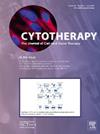Mapping the European landscape and specificity of ATMPs guidance
IF 3.2
3区 医学
Q2 BIOTECHNOLOGY & APPLIED MICROBIOLOGY
引用次数: 0
Abstract
A good amount of guidance has been issued by various national and international organizations in addition to the global regulation of Advanced Therapy Medicinal Products (ATMPs) at the European Union (EU) level. These include regulatory, technical, and scientific documents (mainly, but not only, guidelines), which aim to support the operability of the European pharmaceutical legislative framework. Guidance documents are highly necessary, especially in a rapidly evolving field such as ATMPs in which scientific achievements may translate quickly into therapeutic innovations. They provide the needed flexibility and adaptation that the legislative level could never afford to the same extent when considering the usual delays for revision, adoption, and application of binding legislative acts such as the ATMPs Regulation or the European Directives on medicinal products. This has led to the early adoption of guidance documents in the field of gene and cell therapy, the first of which appeared in the 1990s. However, with this early adoption comes complexity and difficult readability due to the accumulation of new soft law rules in the wake of new scientific findings and hard law regulations. Our study provides the first comprehensive analysis of guidance produced and currently applicable in the field of ATMPs and its relationship with categorization of biological medicinal products. We base our analysis on the collection of available guidance documents from the websites of the most active institutions in the production of guidance on ATMPs applicable within the European Union. We also obtained relevant material via the search engines of those websites by using a list of keywords corresponding to ATMPs or their subcategories.
Our search resulted in a collection of 126 guidance documents applicable to ATMPs from July 1990 to September 8, 2023. We found that the distribution of current ATMP guidance mainly comes from the European Medicines Agency (EMA) and the International Council for Harmonisation of Technical Requirements for Pharmaceuticals for Human Use regarding their sources, and are mainly guidelines regarding their types. This demonstrates that for the majority of currently applicable ATMP guidance documents, there is no overlap with other categories of biologicals, indicating that they are strictly specific to ATMPs. Our data indicate that the overlap between ATMPs and other biologicals essentially deals with the active substance and finished products among transversal categories and with biotechnologicals among various types of biological medicinal products. We discuss these results in light of their usefulness in regard to medical and socioeconomic actors of biotherapies.
Finally, we conclude that the singularity of ATMPs is quite well reflected through their guidance landscape with a high number and diversity of documents. Although the overlap of guidance applicable to biologicals is important and could be anticipated based on the common biological origin as well as common technological approaches and associated risks, there is a drive from regulators, especially the EMA, to ensure that all documents applicable to ATMPs are accessible in one place, on the EMA website. However, with this large quantity and high diversity of guidance may come complexity and confusion: almost no difference is made between cell therapy and tissue engineering medicinal products in guidance documents. The near absence of a link between ATMPs and biosimilars suggests that the latter were not thought of as ATMPs given their recent development and low number in comparison with biotechnologicals; thus, the current navigability of ATMP guidance could be improved.
绘制欧洲景观和atmp指南的特异性。
除了欧盟(EU)层面的先进治疗药物产品(atmp)全球监管外,各种国家和国际组织还发布了大量指南。这些包括法规、技术和科学文件(主要是,但不仅是指南),旨在支持欧洲药品立法框架的可操作性。指导文件是非常必要的,特别是在一个快速发展的领域,如atmp,其中的科学成果可能很快转化为治疗创新。它们提供了必要的灵活性和适应性,当考虑到具有约束力的立法行为(如atmp条例或欧洲药品指令)的修订、通过和应用通常的延迟时,立法层面永远无法承受同样程度的灵活性和适应性。这导致了基因和细胞治疗领域的指导文件的早期采用,其中第一个出现在20世纪90年代。然而,由于在新的科学发现和硬法律规定之后积累了新的软法律规则,这种早期采用带来了复杂性和可读性的困难。我们的研究首次全面分析了atmp领域产生的和目前适用的指南及其与生物医药产品分类的关系。我们的分析基于从欧盟范围内适用的atmp指南的最活跃机构的网站收集的可用指导文件。我们也通过这些网站的搜索引擎,使用与atmp或其子类别对应的关键字列表,获得相关资料。我们的搜索结果收集了从1990年7月到2023年9月8日适用于atmp的126份指导文件。我们发现,目前的ATMP指南主要来自欧洲药品管理局(EMA)和国际人用药品技术要求协调委员会,主要是关于其来源的指南。这表明,对于目前适用的大多数ATMP指导文件,与其他类别的生物制剂没有重叠,表明它们严格针对ATMP。我们的数据表明,atmp和其他生物制品之间的重叠主要涉及横向类别中的活性物质和成品,以及各种类型生物医药制品中的生物技术。我们讨论这些结果,鉴于它们在生物疗法的医学和社会经济行动者方面的有用性。最后,我们得出结论,atmp的奇异性很好地反映在他们的指导景观中,文件的数量和多样性很高。尽管适用于生物制剂的指南的重叠很重要,并且可以基于共同的生物来源以及共同的技术方法和相关风险来预测,但监管机构,特别是EMA,推动确保适用于atmp的所有文件都可以在一个地方访问,即EMA网站。然而,随着指导文件的大量和高度多样性,可能会带来复杂性和混乱:在指导文件中,细胞治疗和组织工程药品几乎没有区别。atmp和生物仿制药之间几乎没有联系,这表明后者不被认为是atmp,因为它们最近才发展起来,与生物技术相比数量较少;从而提高ATMP制导的通航性。
本文章由计算机程序翻译,如有差异,请以英文原文为准。
求助全文
约1分钟内获得全文
求助全文
来源期刊

Cytotherapy
医学-生物工程与应用微生物
CiteScore
6.30
自引率
4.40%
发文量
683
审稿时长
49 days
期刊介绍:
The journal brings readers the latest developments in the fast moving field of cellular therapy in man. This includes cell therapy for cancer, immune disorders, inherited diseases, tissue repair and regenerative medicine. The journal covers the science, translational development and treatment with variety of cell types including hematopoietic stem cells, immune cells (dendritic cells, NK, cells, T cells, antigen presenting cells) mesenchymal stromal cells, adipose cells, nerve, muscle, vascular and endothelial cells, and induced pluripotential stem cells. We also welcome manuscripts on subcellular derivatives such as exosomes. A specific focus is on translational research that brings cell therapy to the clinic. Cytotherapy publishes original papers, reviews, position papers editorials, commentaries and letters to the editor. We welcome "Protocols in Cytotherapy" bringing standard operating procedure for production specific cell types for clinical use within the reach of the readership.
 求助内容:
求助内容: 应助结果提醒方式:
应助结果提醒方式:


